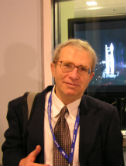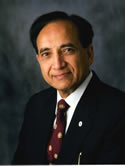| Abstract: |
Purpose: Although high-dose-rate brachytherapy (HDRBT) offers significant advantages over low dose rate brachytherapy, there are scant data on improved local control (LC) and treatment-related complications in patients with recurrent head and neck (H&N) cancers. We report our preliminary results in patients with recurrent H&N cancers treated with interstitial HDRBT. Methods and materials: Thirty patients with recurrent H&N cancers were treated with HDRBT between September 2003 and October 2005. Seventy-seven percent (23/30) of the patients had either local or regional recurrence in the area of previous external beam radiation therapy. The treatment sites were oral cavity/oropharynx (11/30), neck (10/30), face/nasal cavity (6/30), and parotid bed (3/30). Whereas 18 patients underwent surgical resection followed by HDRBT, 3 patients were treated with combined external beam radiation and HDRBT, and the remaining 9 were treated with HDRBT alone. The dose and fractionation schedules used were 3.4 Gy twice per day (b.i.d.) to 34 Gy for postoperative cases, 4 Gy b.i.d. to 20 Gy when combined with 40-50 Gy external beam, and 4 Gy b.i.d. to 40 Gy for definitive treatment. HDRBT was initiated 5 days after catheter placement to allow for tissue healing. Results: With a median followup of 12 months, 6 local recurrences were observed 1-10 months after the procedure. The 2-year LC and overall survival outcomes for the entire group were 71% and 63%, respectively. Patients treated with surgical resection and HDRBT had an improved 2-year LC compared to the patients treated with HDRBT ± external beam radiation alone (88% vs. 40%, p = 0.05). Six Grade II and four Grade III complications were noted in five patients, all observed in the postoperative HDRBT group. Conclusion: The preliminary results of HDRBT indicate an acceptable LC and morbidity in recurrent H&N cancers. A planned surgical resection followed by HDRBT is associated with improved tumor control in these high-risk patients. Based on these encouraging results, prospective clinical trials are warranted using HDRBT in recurrent H&N cancers to decrease late toxicity. © 2007 American Brachytherapy Society. |











